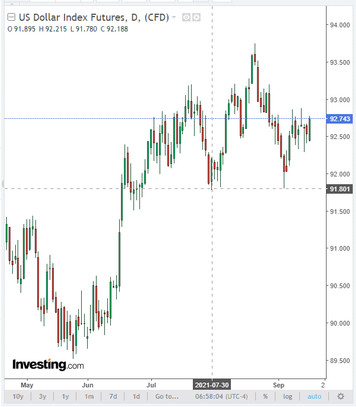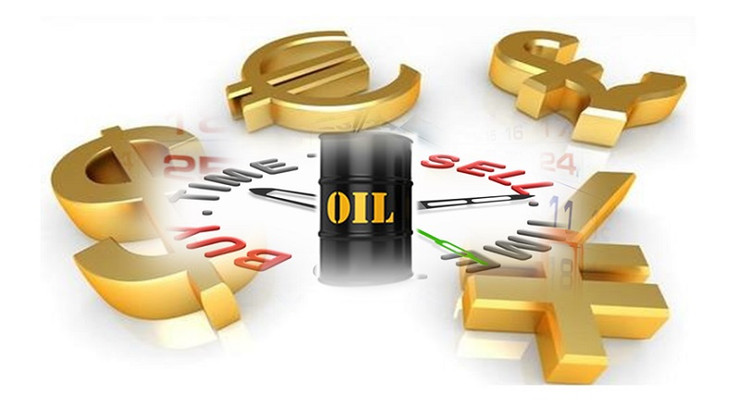As of this writing, WTI crude oil futures were traded near 72.20 mark, just below yesterday's high of $ 72.87 a barrel. On Wednesday, the price reached its highest closing since late July, and trading for this grade of oil closed with a price increase of 3.1%, almost at a seven-week high, at $ 72.61 per barrel. This is the strongest gain for the day in more than three weeks.
Several factors contributed to the rise in prices this week. Back on Monday, OPEC published a monthly report, which claimed that world oil consumption next year would exceed the pre-pandemic level. The growth in demand may be facilitated by the recovery of the level of population mobility, caused by the increase in the number of vaccinated and the strengthening of confidence in the actions of the authorities to combat the spread of the coronavirus, as well as the gradual removal of lockdowns and the restoration of transport links.
OPEC raised its forecast for global oil demand in 2022 by almost 1 million barrels per day to 100.8 million barrels per day (in 2019, demand was 100.3 million barrels per day).
Data from the US Department of Energy, published on Wednesday and showed a drop in oil reserves in the country by 6.422 million barrels, also contributed to yesterday's sharp rise in oil prices. Oil inventories fell for the sixth week in a row.
In addition, stocks of gasoline and distillates in the reporting week of September 4-10 also decreased.
Oil prices are also boosted by disruptions in production in the Gulf of Mexico due to hurricane "Nicholas", which hit the Texas coast on Tuesday, bringing downpours and destruction to areas adjacent to the Gulf of Mexico, and exacerbating the situation with the decline in oil production after the previous hurricane "Ida". The US Bureau of safety and environmental control (BSEE) on Tuesday reported that oil production in the Gulf of Mexico has been cut by 29.5% and gas production by about 39.4%. According to the reports of the US meteorological services, several more hurricanes are expected, and in the future we may see continued growth in prices, analysts of the oil market say.
Given the sharp rise in recent weeks, they say US retail gasoline prices could hit a new seven-year high this week or next. This, in turn, may provoke further growth in oil prices and inflation of prices for other goods and services.
Thus, in the short term, further growth in oil prices should be expected, despite the likely strengthening of the dollar.
Today, futures on the DXY dollar index are actively growing in price after yesterday's fall.

The negative pressure on the US dollar was exerted by the weak macroeconomic statistics from the USA published earlier. Thus, at the end of August, production growth rates halved from +0.8% to +0.4%, which turned out to be worse than the forecast +0.5%.
The consumer price index (CPI) published on Tuesday by the Ministry of Labor rose by +0.3% in August (against growth of +0.5% in July, +0.9% in June and the forecast of +0.4%). The CPI measures the prices that consumers pay for goods and services, including food, clothing, dining, recreation, and transportation.
Annual inflation was 5.3% in August (versus 5.4% in June and July, which is the highest since 2008). The core consumer price index (Core CPI), which excludes volatile food and energy prices, rose +4.0% year-on-year (versus +4.3% growth in July and +4.2% forecast).
Today, the dollar may be under pressure from the new macro statistics from the US, if it also turns out to be weak. Retail sales data for August will be released at 12:30 (GMT). The indicator is expected to have declined, while new cases of Covid-19 infection reduce consumer confidence and, possibly, the volume of purchases in stores, restaurants. According to economists' forecast, retail sales are expected to fall by 0.8%.
Investors will also receive fresh data on the number of Americans applying for unemployment benefits for the first time. In early September, the number of applications for unemployment benefits reached a pandemic low, but economists expect that last week the number of new applications could rise (up to 328 thousand against 310 thousand in the previous reporting week). This is also a negative factor for the USD.
In any case, at 12:30 (GMT) volatility is expected to increase in dollar quotes and, accordingly, in oil prices, in the absence of news from the oil market.





